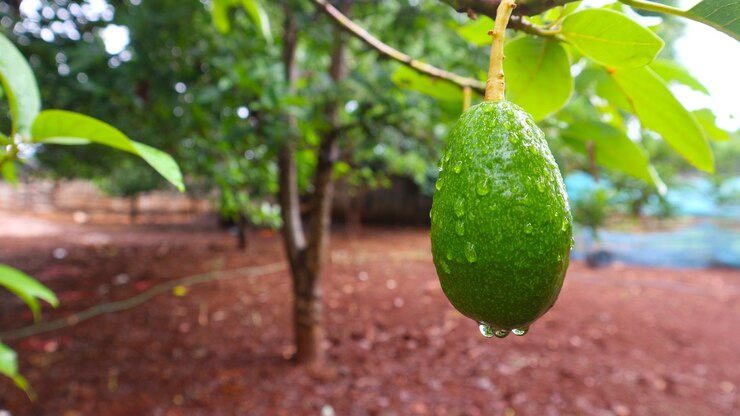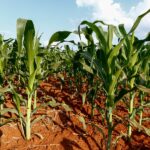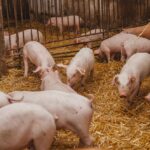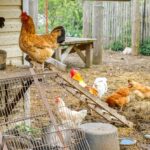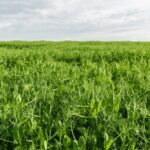Avocado farming requires careful attention to water management, as avocados are sensitive to both drought and waterlogging. A well-designed irrigation system is essential to ensure optimal growth and high-quality fruit production. This article discusses the best irrigation methods for avocado farming, helping farmers achieve successful yields while conserving water resources.
1. Understanding Avocado Water Requirements
Avocados thrive in areas with moderate rainfall, but they require consistent moisture to grow properly. The water needs of avocados vary depending on the climate, soil type, and growth stage. During the early stages of growth, avocado trees need frequent watering, while mature trees generally require deeper, less frequent watering.
Water stress at any stage can impact tree health, fruit development, and yield. Both overwatering and underwatering can lead to root diseases, poor growth, and reduced fruit quality. Therefore, it is essential to choose an irrigation method that provides consistent, efficient water delivery to avocado trees.
2. Drip Irrigation
Drip irrigation is widely regarded as one of the most effective and efficient irrigation methods for avocado farming. It delivers water directly to the root zone through a system of pipes, tubes, and emitters, minimizing water wastage and reducing evaporation. Drip irrigation is especially beneficial for areas where water conservation is a priority.
- Advantages:
- Water Efficiency: Drip irrigation provides water directly to the roots, ensuring that the plant receives water where it is needed most.
- Reduced Disease Risk: By keeping the foliage dry, drip irrigation reduces the risk of fungal diseases and pests that thrive in wet environments.
- Reduced Weed Growth: Water is only delivered to the root zone, which limits the growth of weeds between rows.
- Challenges:
- Clogging Risk: Emitters and pipes can clog if water quality is poor, so regular maintenance and filtration are essential.
- Initial Cost: The installation of a drip irrigation system can be expensive, although the long-term water savings may justify the initial investment.
3. Flood Irrigation
Flood irrigation, also known as surface irrigation, involves flooding the orchard with water. This method can be effective in areas where the land is flat, and water is available in large quantities. However, it is less water-efficient compared to drip irrigation, as it can lead to water wastage and promote weed growth.
- Advantages:
- Simple and Low-Cost Setup: Flood irrigation is relatively simple to set up and doesn’t require a complex network of pipes and emitters.
- Suitable for Large Orchards: In areas with abundant water sources, flood irrigation can be used to irrigate large fields efficiently.
- Challenges:
- Water Wastage: Flooding can lead to significant water runoff and evaporation, which reduces efficiency and increases water consumption.
- Risk of Waterlogging: Overuse of flood irrigation can lead to soil compaction and waterlogging, which can damage avocado roots and reduce productivity.
- Weed Growth: Excess water can encourage the growth of weeds, which compete with the avocado trees for nutrients and water.
4. Sprinkler Irrigation
Sprinkler irrigation involves spraying water over the orchard through a network of pipes and sprinklers. This method can be used effectively for avocado farms, especially in areas with moderate water availability. Sprinklers are typically set up to cover the entire farm, simulating rainfall.
- Advantages:
- Even Water Distribution: Sprinklers provide even coverage of water, which can help ensure all trees receive sufficient moisture.
- Flexibility: Sprinklers can be adjusted to suit different terrain and can cover large areas.
- Low Initial Cost: Sprinkler systems are relatively inexpensive to install compared to drip irrigation systems.
- Challenges:
- Evaporation Losses: Sprinkler systems can suffer from water loss due to evaporation, especially in hot or windy conditions.
- Disease Risk: Wetting the foliage can increase the risk of fungal infections and pest problems in avocados.
- Water Wastage: In areas with limited water resources, sprinkler systems may not be as water-efficient as other methods like drip irrigation.
5. Subsurface Drip Irrigation
Subsurface drip irrigation is a variation of the traditional drip system, where the emitters are placed underground near the root zone. This method is highly efficient and reduces evaporation losses, making it ideal for water-scarce regions. It also eliminates the risk of clogging at the surface, as the system is buried underground.
- Advantages:
- Reduced Water Loss: Since the water is delivered directly to the root zone and buried underground, evaporation losses are minimized.
- Efficient Use of Water: Subsurface drip irrigation is one of the most water-efficient methods available, making it ideal for areas with limited water resources.
- Reduced Weed Growth: As with surface drip irrigation, subsurface systems deliver water only to the root zone, reducing weed competition.
- Challenges:
- Complex Installation: Subsurface drip irrigation systems require careful installation and maintenance, making them more expensive to set up compared to surface drip irrigation.
- Root Intrusion: In some cases, roots can penetrate the underground pipes, leading to blockages and system failure.
6. Micro-Sprinkler Irrigation
Micro-sprinklers are a type of sprinkler irrigation system that delivers small droplets of water directly to the soil. These systems are ideal for avocado farming, as they provide adequate water coverage while minimizing evaporation and runoff.
- Advantages:
- Water Efficiency: Micro-sprinklers reduce water waste by delivering water directly to the root zone.
- Even Distribution: They offer even water distribution across the farm, helping to maintain consistent soil moisture levels.
- Low Water Pressure Requirements: Micro-sprinklers work efficiently under low water pressure, making them suitable for farms with limited water supply.
- Challenges:
- Initial Cost: While generally less expensive than subsurface drip irrigation, the installation of micro-sprinkler systems can still require a significant investment.
- Risk of Foliage Wetting: Though less of a concern than conventional sprinklers, micro-sprinklers can still wet the foliage, which may increase the risk of fungal diseases.
Choosing the right irrigation method for avocado farming depends on factors such as water availability, soil type, and climate. Drip irrigation remains one of the best methods due to its water efficiency, especially in water-scarce regions. However, flood irrigation, sprinkler irrigation, subsurface drip systems, and micro-sprinklers all have their place depending on the specific needs of the farm.
By carefully selecting the most suitable irrigation method and implementing proper maintenance practices, avocado farmers can ensure healthy trees, optimal growth, and high-quality fruit production while conserving precious water resources.
Join 'Farmers Mag' WhatsApp Channel
Get the latest Farming news and tips delivered straight to your WhatsApp
CLICK HERE TO JOIN
